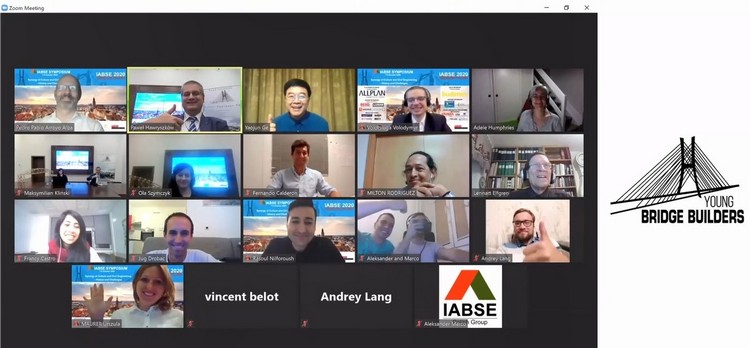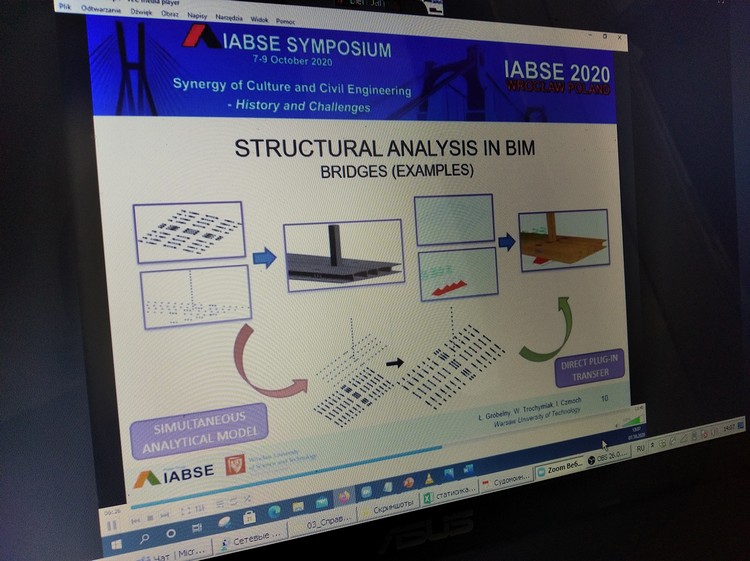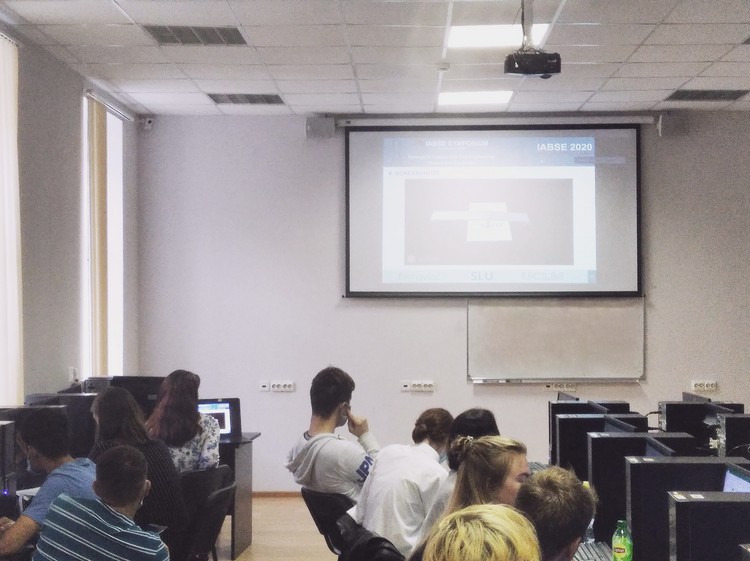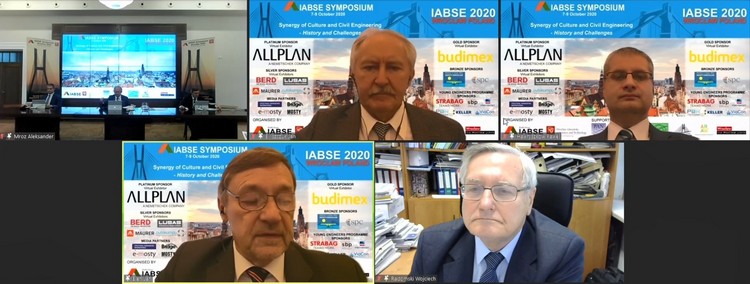SPbGASU scientists took part in the IABSE European Symposium
Nikolay Kozak
In early October, the IABSE European Symposium (International Association for Bridge and Structural Engineering) took place online. Scientists and students of SPbGASU participated in this forum organized on the basis of the Technical University of Wroclaw (Poland). Nikolay Kozak, a postgraduate student and assistant professor at the Department of Roads, Bridges and Tunnels, SPbGASU, talks about the symposium.
– The IABSE is one of the world's largest associations of specialists in the field of bridge construction, tracing its history back to 1929. Under the auspices of the Association, symposia and conferences are held annually, and the Structural Engineering International SEI journal is published. The Association conducts research in many areas. The chairman of the IABSE working commission “Operation of structures, safety and condition assessment " is Associate Professor of the SPbGASU department of Roads, Bridges and tunnels, Anton V. Syrkov, Candidate of Engineering. He is the head of the department of life cycle of transport structures of OAO Transmost.
– Please tell us about the European Symposium.
– The European Symposium at the Technical University of Wroclaw was held in the format of parallel sections; representatives of more than 30 countries made about 120 reports.
✔ The main topic of the symposium was the idea of Synergy of Culture and Civil Engineering - History and Challenges. Much attention was paid to bridges and structures as cultural, architectural and engineering monuments and related issues of their modernization and maintenance, which is essential for St. Petersburg.
{gallery name="Симпозиум мосты проектирование 102020"}
– What were the reports of the symposium about?
Morandi Viaduct in Genoa and the moment of its dismantling
– A number of reports by researchers from Italy were devoted to working with the heritage of the engineer Riccardo Morandi, who built many unique reinforced concrete structures in the XX century, some of which are now collapsed (the Genoa disaster in 2018) or are in a potentially hazardous condition. In particular, the engineer's legacy was highlighted in the report of researcher E. Civiero (University eCampus, Italy) "Riccardo Morandi and his Italian reinforced concrete bridges".
The presentation dedicated to a survey of the heritage of Riccardo Morandi, successively outlined the milestones that preceded the rise of the Italian school of reinforced concrete of the 20th century, the key moments of its heyday and the stages of current awareness of the built objects as engineering monuments. The author emphasized the problems of reconstruction and strengthening of unique reinforced concrete structures both from economic and technical points of view.
Caravolo, a scientist and lecturer at the Polytechnic University of Turin, also devoted his speech to the legacy of the great Italian engineer on the topic "Dynamic studies of the condition and seismic stability of the Morandi pavilion at the Turin Exhibition Center".
Researches of this unique structure of engineer Morandi – a large-span exhibition pavilion - were carried out for seismic stability analysis of such exceptional structures from pre-stressed reinforced concrete. The results of dynamic analysis of the structure showed that during the design the structure was not designed for seismic effects and probably will not withstand earthquakes even of average force, on the basis of which recommendations were given on the necessity of additional inspections and subsequent reinforcements of all such structures.
Finally, the 2018 catastrophe was covered in detail in a report by a group of researchers led by S. Invernizzi (Polytechnic University of Turin) "The collapse of the Morandi bridge: issues of fatigue and corrosion".
The presentation was devoted to the study of the fatigue-corrosion hypothesis of the causes of the destruction of the Poltsever viaduct in Genoa. The authors, using analytical models, investigated the operation of reinforced concrete cables with the account of long-term processes of reinforced concrete (shrinkage, corrosion) while simultaneously exposed to cyclic loads. According to the results of the study, the hypothesis was recognized as valid; in addition, the authors raised the question of the need to revise the approach to determining the calculated endurance thresholds for constructed and under construction structures of this type.
– What other talks caught your attention?
– A group of researchers from St. Petersburg State University of Railways which included A. Lang, N. Labutin and L. Dyachenko highlighted the topic of "Monitoring the opening of cracks: a study of the problems of the Volodarsky drawbridge.” The authors raised the problems identified during the operation of the Volodarsky Bridge and outlined ways of their possible solution. During regular surveys of the bridge, growing cracks were found in the area of the axis of rotation; the authors shared the results of detailed examination and field tests of the bridge structure, and their conclusions.
I was also interested in the report of a group of Finnish scientists led by M. Ranta named “Modeling loads from traffic flows when assessing endurance. Comparison of the endurance of reinforcing bars in reinforced concrete bridges at the example of design and traffic loads.” Using mathematical modeling methods, the authors compared the endurance of elements under the influence of two different standard design loads (fatigue loads No. 1 and No. 3 according to Eurocode) and under the action of a simulated traffic flow. Analysis of the data obtained showed that reinforced concrete bridges are characterized by a higher correspondence of fatigue load No. 1 to the real effects of the traffic flow, as well as a significant influence of the composition of the traffic flow (percentage of heavy trucks) on the choice of the design fatigue load model. The data and models obtained in the course of the study are planned to be introduced into the national additions of the Ervokods.
St. Petersburg specialists A. Syrkov and A. Sizikov focused on the topic of “Reliability of bridge structures and risk management models. Improving bridge management based on crash data.”
Analysis of the history of bridge structures collapses carried out by these authors, shows an increase in both the number and severity of the consequences of such incidents. So, over the past ten years, the number of recorded bridge destruction accidents was 50% higher than it had been a decade earlier. The authors have identified the most common types and causes of failure of bridge elements. Based on the obtained structure and indicators of the probability of destruction, the researchers proposed to determine the risks of accidents of certain types of structures for the protective prevention of the most probable disasters. Scientists plan to develop the presented risk management model at the international level within the framework of a working commission.
Growth of the number of bridge collapses
Several sections of the symposium were devoted to the issues of reliability, resources, and durability of structures, work on which is carried out at our department of roads, bridges and tunnels within the framework of the scientific school of Professor Vladimir A. Bystrov.
Besides me, postgraduate students Olga Golubeva and Artyom Shatalin took part in the symposium and discussion of the reports from the SPbGASU Department of MRB&T. Participation in the symposium gave us the opportunity to get acquainted with the latest developments and research in the field of bridge construction.
Text: Elena Shulgina
✔ Learn more about the Department of Motor Roads, Bridges, and Tunnels, its areas of training and teachers







